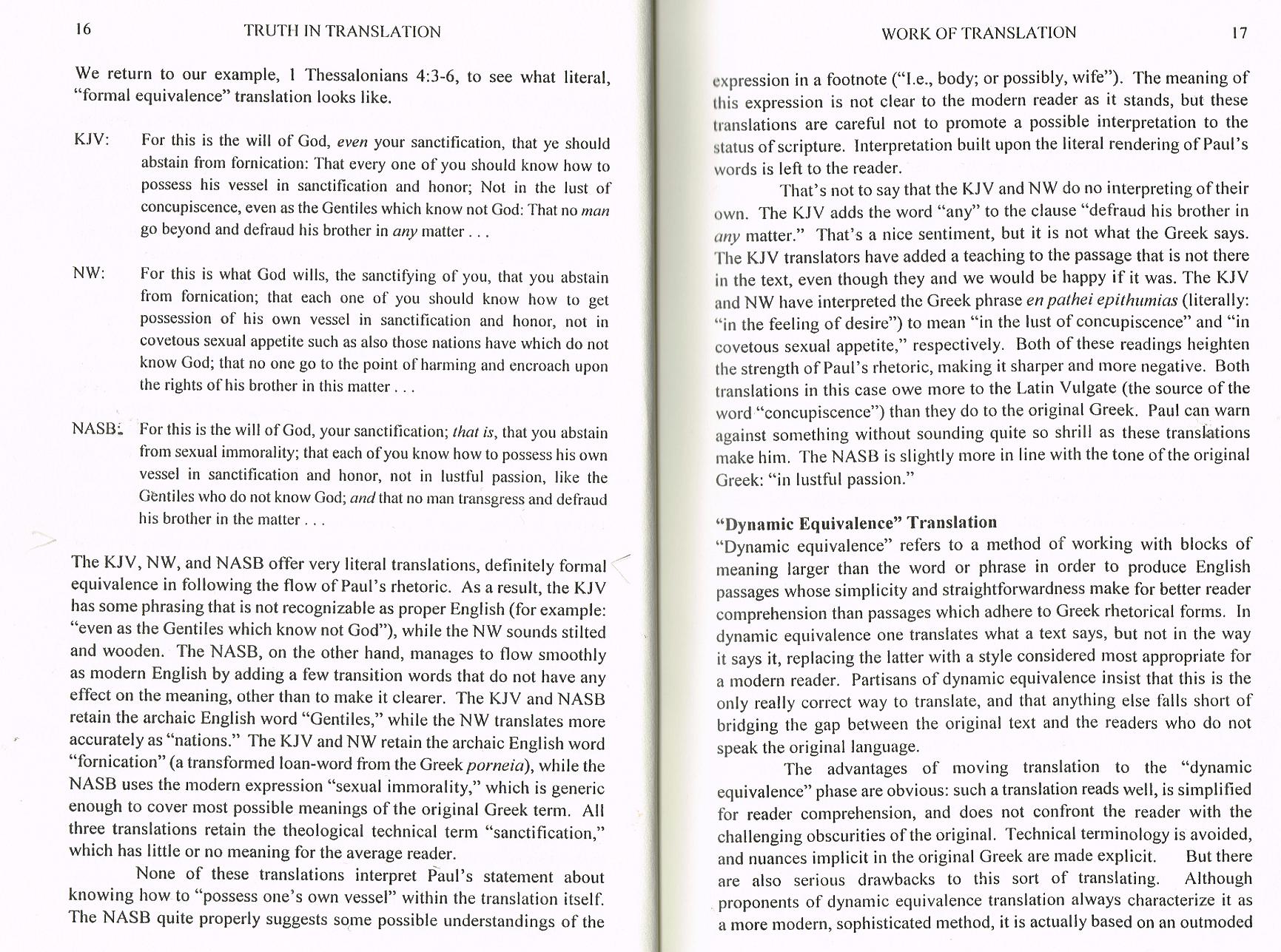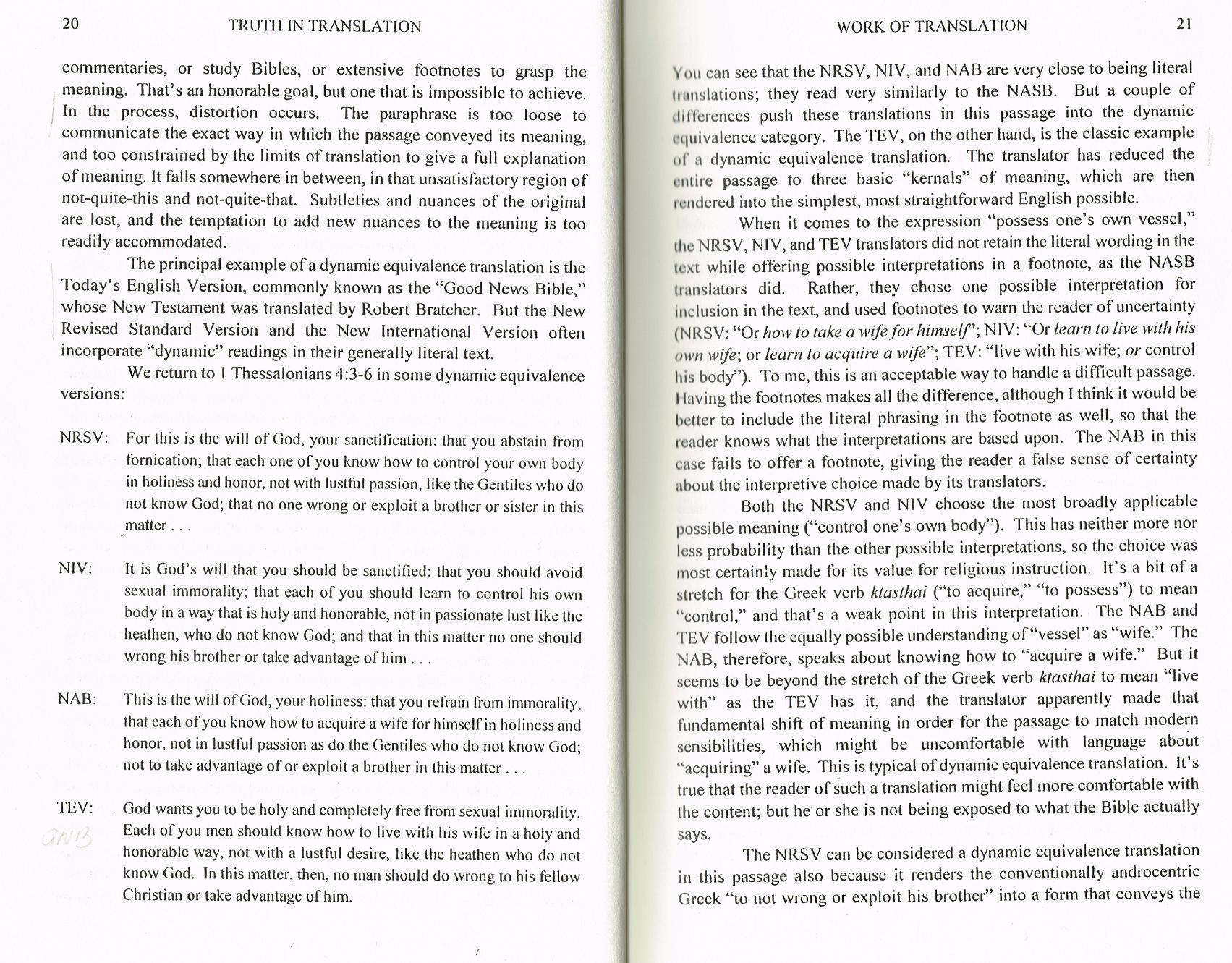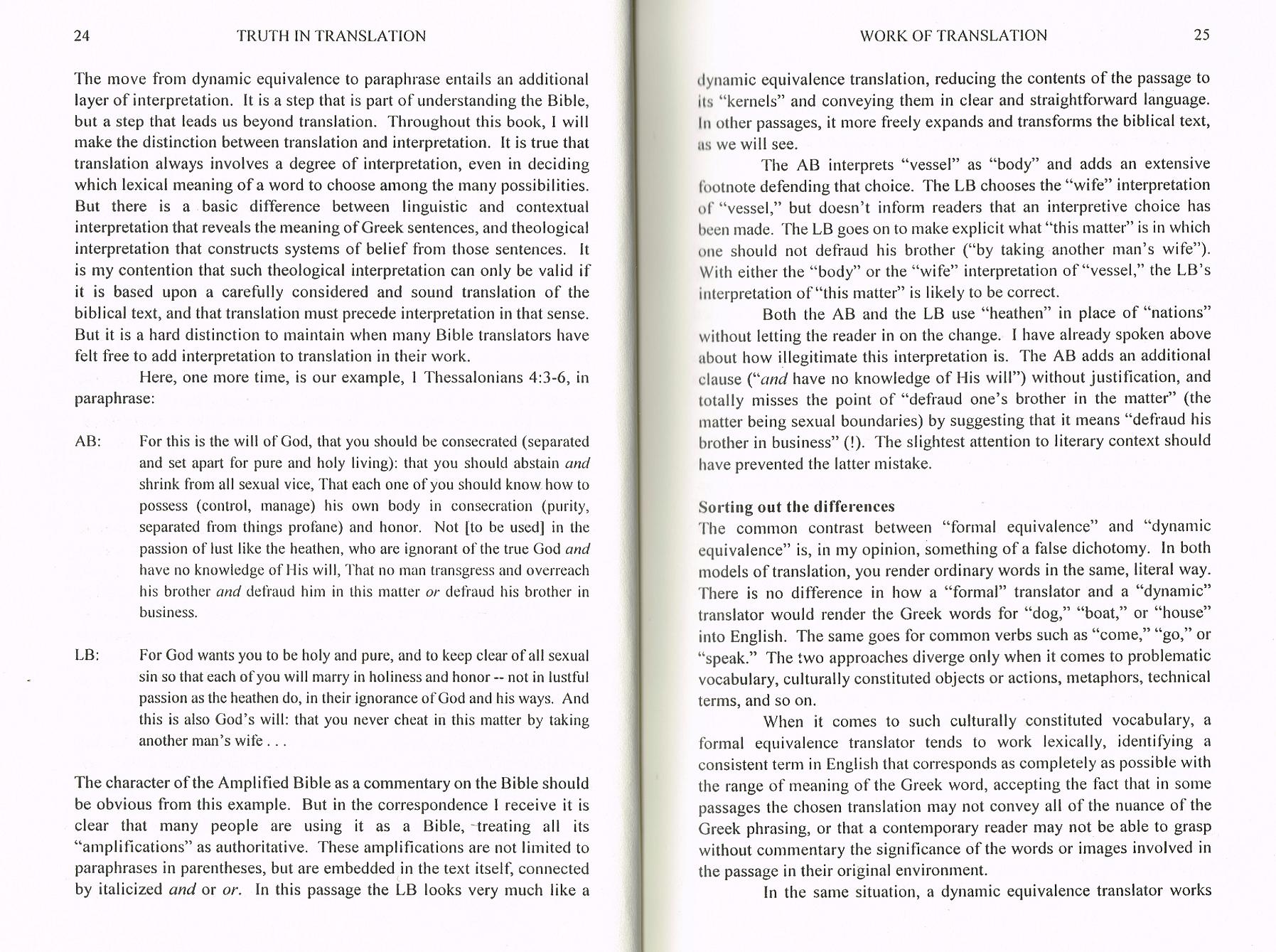Truth In Translation
Accuracy and Bias in English Translations of the New Testament
Jason Beduhn
More books on Religion
Anyone can write a book puporting to explain the Bible, but invariably with no understanding of the validity or biases of the translations they are using.
For many, the KJV is the norm, and if a translation varies much from that, it is criticized as erroneous. But the KJV is not the first bible, or even the first English bible. It is simply the one which has been most commonly used, for the longest time.
Have to measure a translation against the original Greek text. Not a word-for-word, which is called an interlinear, which is a stage to a translation.
Problem of course that Greek words do not have a one-to-one correspondence to English words, and Greeksentence structure and style also differs radically in the way that meaning is expressed.
Then the problem of bias. Almost everyone motivated enough to undertake the arduous work of translation, already has an investment in a particular form of Xity, andthat investment can affect their objectivity.
So you get ideas that the translator would like to see in the Bible.
Sometimes the bias is explicit. The new American Bible was prepared by Catholics, The New World Translation by JVs, and The New International Version was made for evangelicals. But even inter-donominational bibles have bias - the hardest to detect bc it is widely shared. But just bc lots of us share a belief, it doesn't mean it is correct.
Ideally, a translation should be the most obvious, straightforward and unspecialized understanding of a word or phrase. Any other choice needs strong evidence . if a translator reaches for novel or unlikely sense of Greek, we must be very suspicious of their motives.
Accurate translations are based on 1) linguistic content 2) literary context and 3) the historical and cultural environment.
No two manuscripts of the Bible agree exactly, bc they are imperfect copies of lost originals.
Whether or not the original Biblical authors were divinely inspired, modern English texts are twice removed from any such inspiration; first by fallible human copyists, and second by fallible human translators.
We do not have original autographs of the NT authors. What we have are copies of copies of copies.
And plenty of room for errors. Written on rough paper with poor ink, so imperfections changing what a letter looks like. Then, imagine the scribe copying. He is constantly looking at the original, then at his copy, then back to original. Easy to lose your place, and skip ahead to next example of your last word, so material is lost, or even go back to an earlier example and duplicate sentences. And complicated by lack of any punctuation, or spaces between words.
Bible trans is a series of steps, from Greek to draft English to polished English. Any Greek word has anywhere fro 2 to 12 English equivalents. To decide which equivalent to use you need to know when it was used (since meanings changed over time), which part of speech it is, and the context.
Be wary of lexicons, particularly if they assure you that there is only one meaning. Most of these use only the Bible as their reference, instead of all available Greek literature of the period.
That gives you an intralinear, or word for word, translation, which then has to be rearranged and expanded according to normal English syntax.
Vital to recognize that Jesus' earthly careertook place in a world very different to our own. To communicate his ideas, Jesus used the cultural environment they were in - it's values and symbols, its social arrangements and its religious vocabulary. An ancient, alien cultural context.



Books by Title
Books by Author
Books by Topic